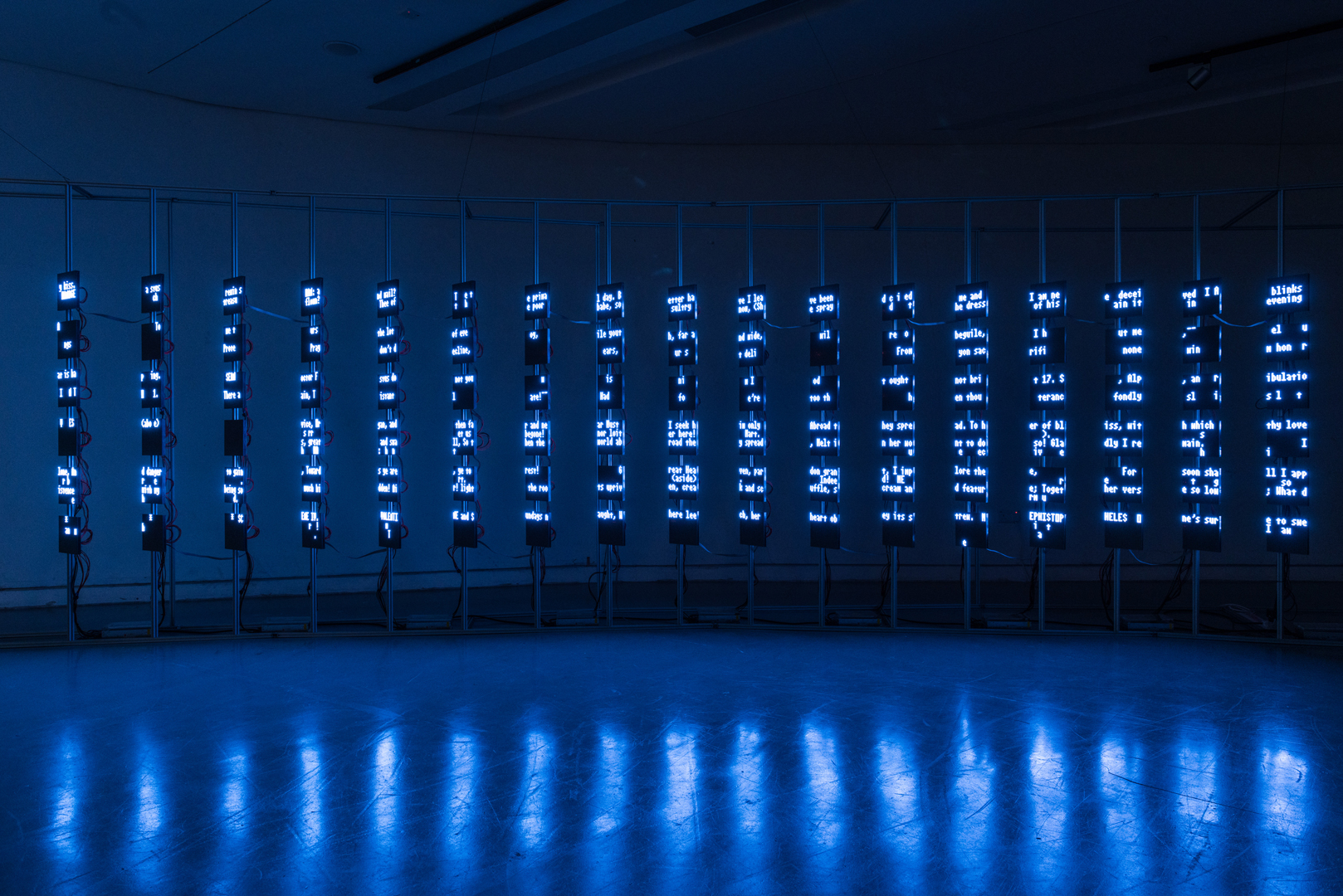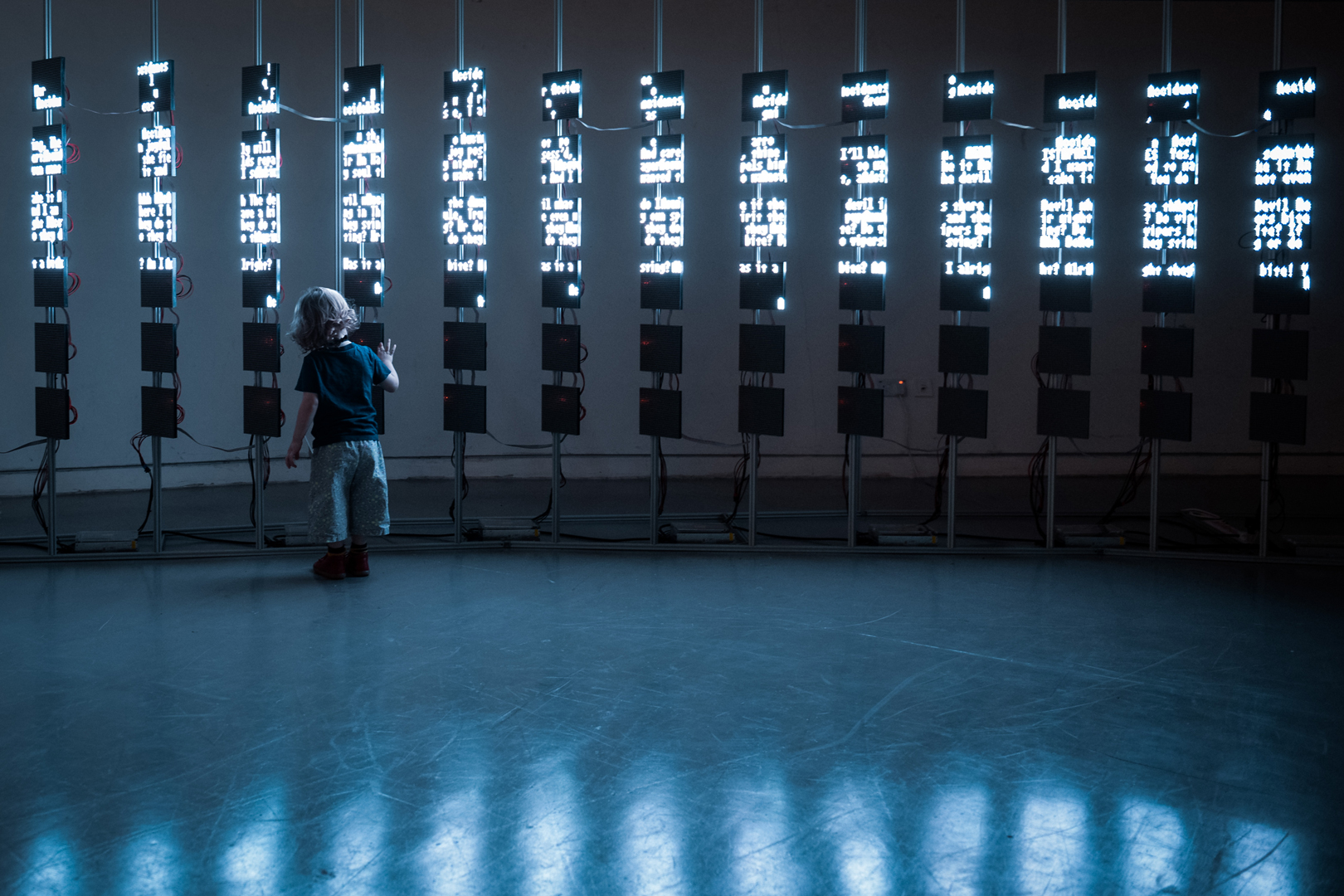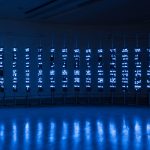“Déjà Entendu | An Opera Automaton” by Lukas Truniger
Title:
- Déjà Entendu | An Opera Automaton
Artist(s) and People Involved:
Exhibiting Artist(s):
Symposium:
- ISEA2016: 22nd International Symposium on Electronic Art
-
More artworks from ISEA2016:


Venue(s):
Creation Year:
- 2015
Medium:
- Generative installation
Artist Statement:
“Does it really say that?… I try to focus the words… they separate in meaningless mosaic…”
William S. Burroughs, Naked Lunch (p.52).
“It makes mosaic-like combinations of particles possible, technical images, a computed universe in which particles are assembled into visible images. This emerging universe, this dimensionless, imagined universe of technical images, is meant to render our circumstances conceivable, representable, and comprehensible.”
Vilém Flusser, Into the Universe of Technical Images, 2011 (p.13).
The structure of language – musical at its origin – is the source of this installation. Based on texts and melodies originating from operas telling the Faust myth (the epic of human curiosity and desire), the installation explores the underlying contour of language. The work is made of industrial objects. 102 screens and speakers creating an emergent space, arranged in repetitive patterns. Blowing up the virtual into space. Phrases and melodies of the vocalists are constantly reproduced using machine learning software. Powerful algorithms, which transform the way we act and think, omnipresent in our society and in permanent interaction with us. A new version of Faust is created, fragmented and with varying degrees of legibility, recreated in light and sound movements. It is a game with the boundaries of perception. The point where language loses its meaning and becomes abstract. Language which is pushed to its limits, where nothing is left but pure rhythmic and melodic structure. It is the organic nature of language, imitated by a machine. This reveals the proper poetics – in all its absurdity – of the digital.
There are two questions at the foundation of this project: Language has evolved from something bound to a materialized object, like the book, to something virtual. It is becoming flexible, alterable, ductile. It is organized by digital machines, which allow us to interpret it in a new way. Our knowledge is regenerated by these machines, which enable us to understand the vast extent of human substance anew. The second question of the project: Our world is full of technical objects conducting us. Displays, images and sounds construct our urban environment. It is crucial for the understanding of our society to understand the nature of these objects and their messages. By the means of alienating their primary functions, their potentials can be explored.
We cut a swath through this tangled world. A straight line loophole for all intents and purposes and a far view over this jungle that only appeared to be intangible, multidimensional, but that we knew would turn out to be flat (once we flattened it). And rasterized. Composed of precisely arranged concrete districts, subdivided by straight tarmaced lines its sound, we discover that the city is full of hidden potentials.
Still, it is not the ever-advancing, hyper-engineered, super efficient vision of what is to come. But the idea of advancing in all directions: This future is an ocean and we are navigating on it now. Going nowhere and yet getting everywhere -in circles- or is it spirals? Complex systems and network processes, self-made code and circuits, hacked tools, misused instruments and objects of mass consumption have become crucial components of Truniger’s work. He is engaging in different notions of language, visual and acoustic potentials of algorithmic processes and their ability for an apparently organic behavior. He implements these formal ideas in sculptural objects, multimedia installations, musical performances and instruments as well as compositions.







